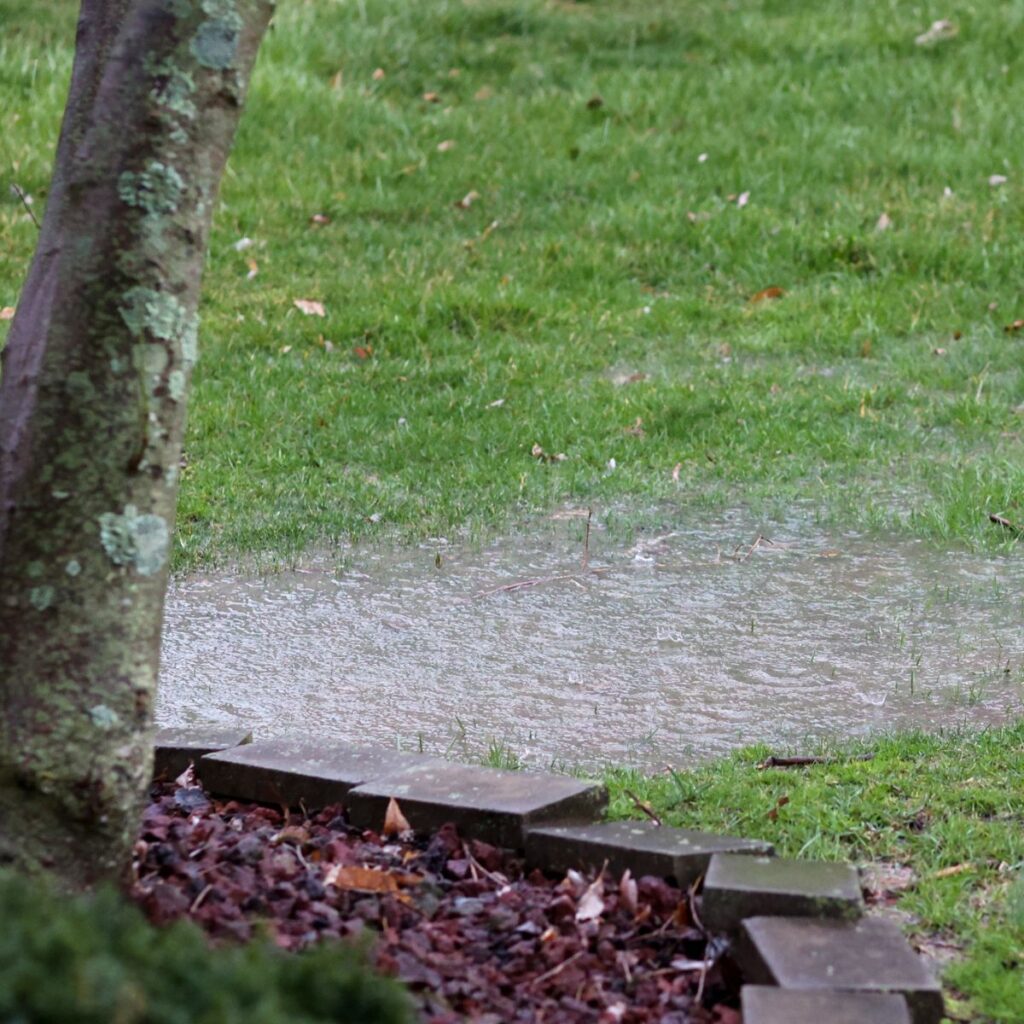Water Drainage Solutions
The weather in Central Texas and the Hill Country can be so unpredictable. Here in Austin, we’ve come to know the old cliché, “When it rains, it pours.” We’ll go through stages of drought, followed by days and days of heavy rain. There’s seemingly no in-between.
Unfortunately, the heavy rains can leave you with a flood of home repair needs. A proper drainage system and gutters are vital for homeowners in Austin so you can protect your investment.
Here at G.L. Hunt, we’re family-owned and operated — and the safety of your home is our top priority. We’re your go-to partner for all your drainage and gutter needs.
Signs Of Drainage Problems
If you have poor drainage around your home, it’s important to spot the warning signs before you experience major structural issues, such as cracks in your foundation.
Here are just a few things to watch for:
- Too much humidity in your crawl space
- Puddles of moisture in your crawl space
- Mold in your crawl space
- Soggy ground around your home
- Warped floors inside your home
G.L. Hunt Foundation Repair is here if you think your home or commercial property could use better drainage.
We have several different drainage solutions tailored to meet your needs in Austin.
Foundation Drainage Services

Your foundation is the key to your home’s structural integrity, and it should be protected. G.L. Hunt’s professional foundation drainage solutions include foundation pipes, which are installed underneath the foundation.
These pipes collect the groundwater and move it away from your home so it doesn’t seep into the foundation or crawl space. Foundation drains are typically connected to a sump pump, which releases the water into your yard or a storm sewer.
The team at G.L. Hunt Foundation Repair has expertise in sump pump installation, including commercial sump pump installation.
French Drain Installation
Another option to remove water from your yard is a French drain. This involves a professional drainage company digging a trench in your yard to install a wide, perforated pipe in the ground at a downward slope.
That pipe collects excess groundwater from the soil and moves it away from your home and foundation. While this might sound like an eyesore, French drains typically become statement pieces. They’re either covered with gravel or rock that can be incorporated into your landscaping.
G.L. Hunt is happy to answer any questions about a French drain Austin homeowners may have – and we’re the professionals in French drain installation you can trust.
Surface Drains
Like French drains, surface drains also help redirect water away from your home – but surface drains get rid of water at the surface, as the name implies. These drains are usually installed on flat surfaces most susceptible to flooding during heavy rains.
At G.L. Hunt, our Austin surface drain installation services feature either 9×9 inch or 12×12 inch concrete canals and PVC pipes that catch the surface water and divert it elsewhere before it can seep into the soil and cause damage to your foundation.
Austin Gutter Services
Your gutters also play a key role in proper drainage and protection of your foundation’s overall strength. No matter if you need gutter repair in Austin or new gutter installation — G.L. Hunt has you covered.
When you think of gutters, you think of rainy days. Proper gutter design prevents water from pooling around your home and seeping into the ground, protecting your foundation. However, gutters have several additional benefits.
Landscape Protection
Gutters prevent water from running straight off your roof into your yard, which could cause your soil to erode. Instead, gutters help control the amount of water being distributed to different areas of your yard.
Mold Prevention
Gutters keep rainwater away from your walls, siding and windows. By preventing this, you’re protecting your home from water seeping inside and forming mold.
Decay Prevention
Gutters also keep things dry in your foundation, drywall and crawl space. This is important to maintain the structural integrity and strength of structural beams.
Wave Goodbye To Water Woes: Secure Your Property With Our Gutters!
For all your drainage and gutter needs, trust the professionals at G.L. Hunt Foundation Repair in Austin. We’ve protected homes across Texas for more than three decades — and we can do the same for you. Contact G.L. Hunt today to schedule a free estimate!







